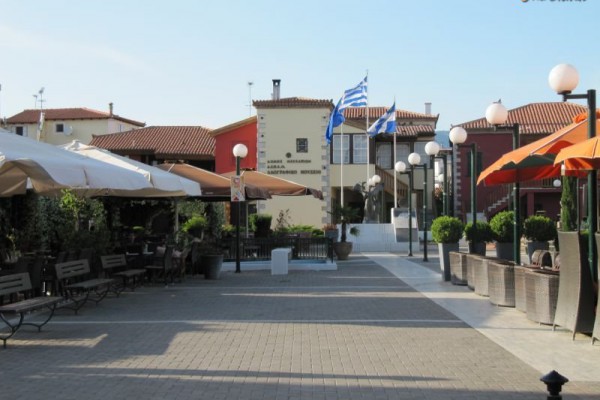Psahna Town – Evia Island
Psahna is a town of Evia Island with important population increase, potential and significant commercial, industrial and handcraft activities. It serves as a passage from Halkida to North Evia, while, at the same time, it is the base of both the Municipality of Dirfys-Messapia and the Technological Educational Institute of Halkida. The beautiful preservable buildings, the squares, the churches and the neighboring monasteries along with many cultural events that take place, contribute in the increase of the number of visitors and in the general development of the town. This results in the periodic rapid rise of traffic load especially in the center of Psahna.
The road network of the area is generally in good condition. However, it cannot serve the peak points of traffic load in an adequate way. The great majority of the roads present a really narrow total width and they are of dual direction. In addition, the total lack of indoor or outdoor parking spaces adds to the uncontrolled and illegal parking, while there is limited or no use of traffic signs. In order to cope with the existing situation, the former Municipality of Messapia, contracted, in 1999, consultant engineer Albert Paul Yamin, the design of traffic planning and parking space design of Psahna town. The study was successfully completed in 2001.
Project facts:
• One-way traffic arrangement of five (5) main and ten (10) secondary roads of the town, at parts or at whole
• Conversion of existing roads to pedestrian ways in whole and/or by section
• Design of two (2) intersections as follows:
The first, located in the south entrance of the town, channels the traffic between those coming from Halkida and those that are heading towards the latter. At the same time, it diverts the traffic coming from Politika town - North Evia and to Aghia Triada
The second, located in the west entrance of the town, channels the traffic between those heading towards Politika town - North Evia and towards Halkida and Aghia Triada
• Planning of sufficient number of parking spaces along the side of the one-way roads
• Provision of road sings throughout the respective network
• Relocation of the taxi parking station and of the bus stop, from the sensitive area of the town center to its south entrance

